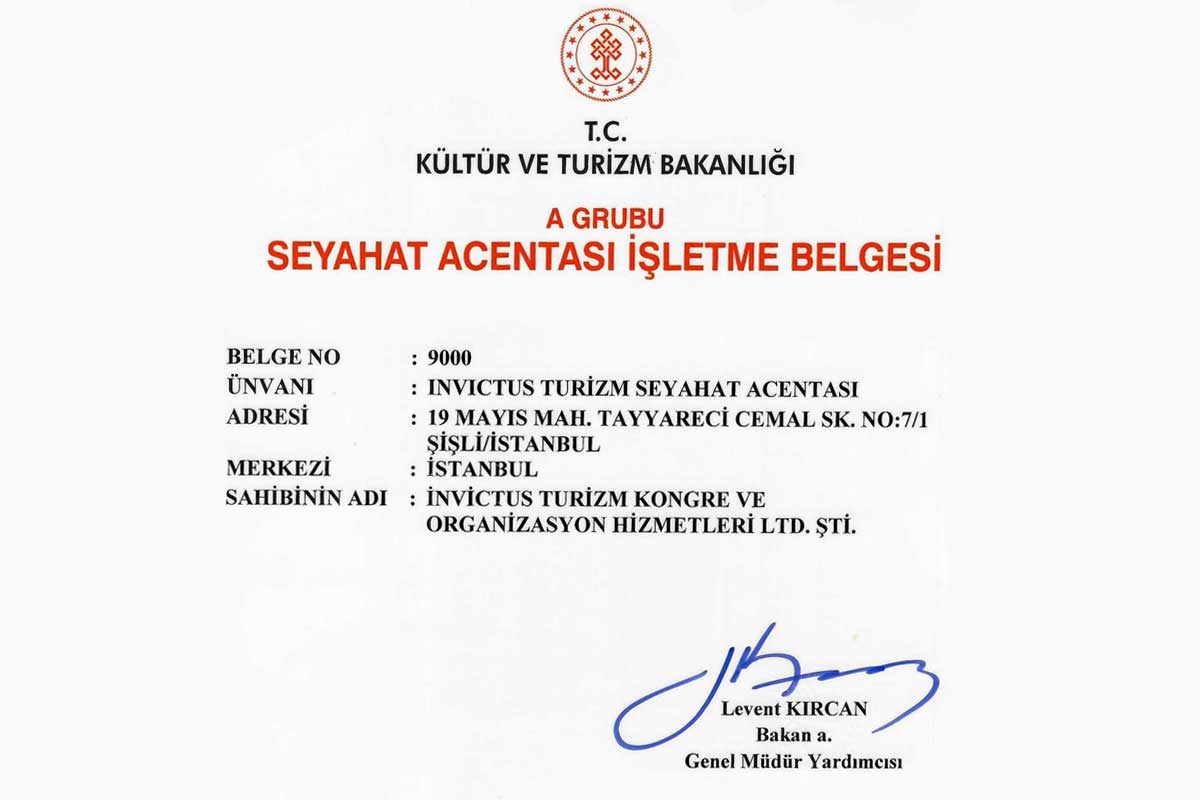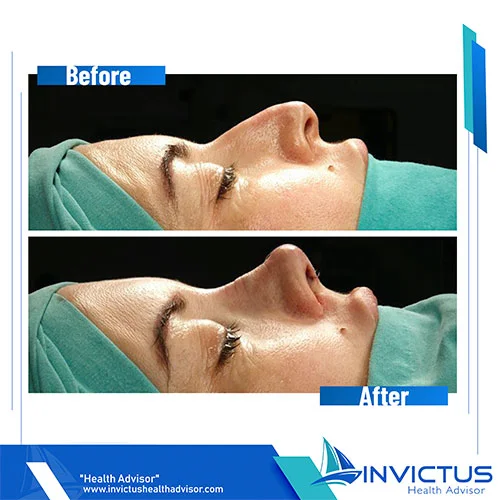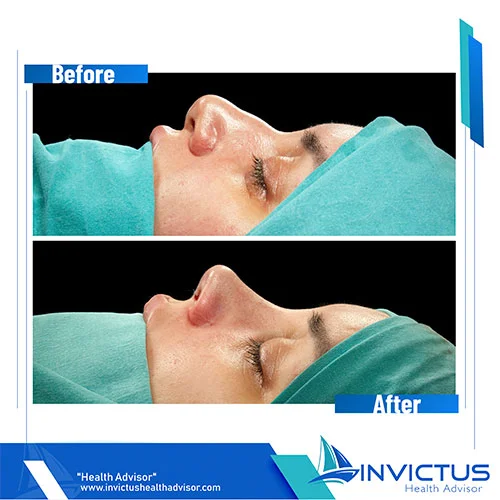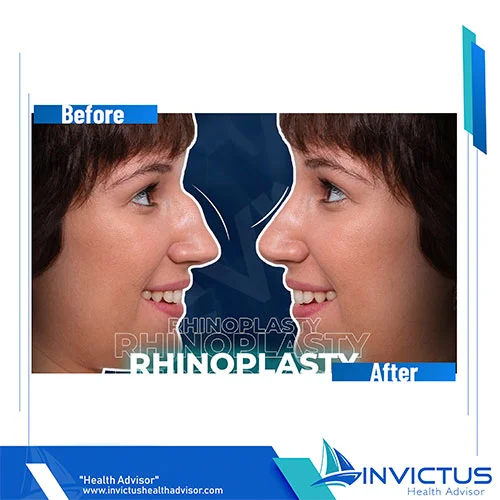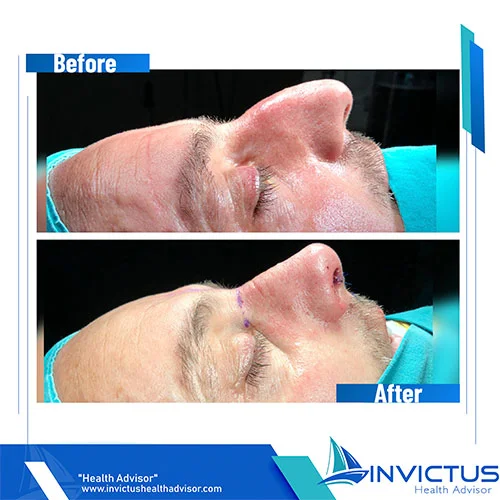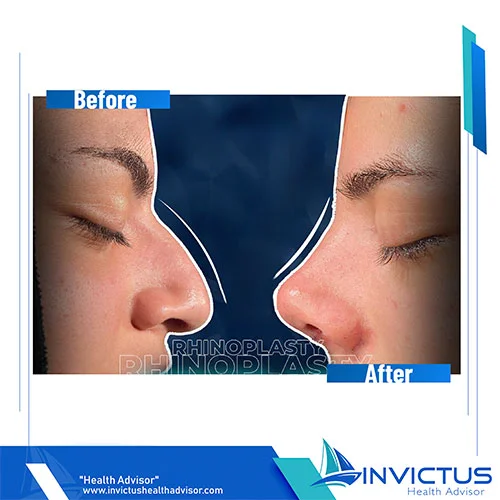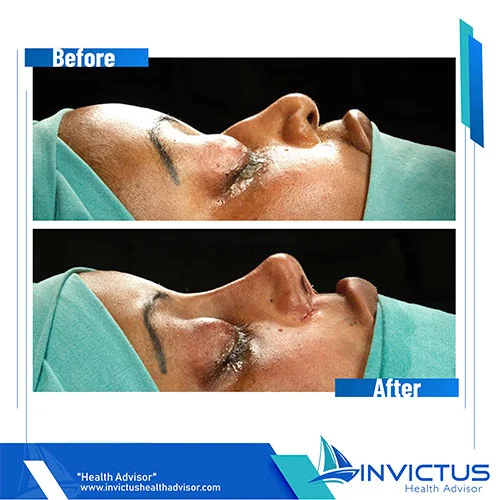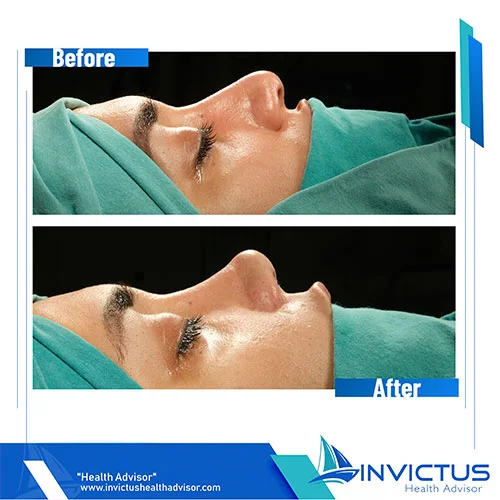Free Consultation Form
Rhinoplasty is a surgical process to improve the shape, size, and proportion of the nose. It can be applied both for aesthetic purposes and to correct respiratory problems. Rhinoplasty usually involves changes to the nasal bone, cartilage, and skin.
WHY CHOOSE INVICTUS HEALTH ADVISOR
Rhinoplasty is a procedure that can be customized according to the needs and wishes of each patient. A good plastic surgeon will evaluate to determine the most suitable rhinoplasty approach for you and will allow you to clearly understand your expectations before surgery.
Rhinoplasty is usually performed under general anesthesia so that the patient sleeps during the procedure and does not feel any pain or discomfort. In some cases, local anesthesia and sedation can be used.
The rhinoplasty process can start with an incision to be made through or outside the nose. While the approach made through the nose is generally preferred for minor corrections and shape changes, incisions made from outside the nose are used in situations that require more extensive revisions or structural changes.
During rhinoplasty, the skin is closed and arranged to fit the new shape. The skin is laid on the nose and fixed with stitches. After the rhinoplasty process is completed, stitches are placed in the nose and a splint and plaster can be applied if necessary. Swelling, bruise, and mild discomfort may occur during the healing process.
Following your doctor’s recommendations, it is important to pay attention to instructions such as intranasal cleansing, regular bandage care, and rest. The full recovery process can usually take from several weeks up to several months.
Points to consider after rhinoplasty may vary depending on your doctor’s recommendations. You can best manage the recovery process by carefully following your doctor’s instructions. It is important to contact your doctor when you have any questions or concerns.
Rhinoplasty Before & After
Rhinoplasty Operation Overview
Let’s Plan Your Treatment Together in Turkey
PLAN YOUR TREATMENT IN TURKEY
Let us share with you how this magnificent transformation adventure, which begins from the moment you meet us, works.
ONLINE MEETING
VIP TRANSFER
We welcome you at the airport and bring you to our clinic safely in private vehicles.
YOU ARE OUR GUEST
We offer hotel accommodation during your treatment stay.
TREATMENT
Your doctor will create a plan. Surgery takes 3-4 hours, followed by a 1-night stay. After a final check-up, you’ll be discharged.
INTERPRETER SUPPORT
Enjoy healthcare in your own language with interpreter support before, during, and after treatment.
Free Consultation Form
Frequently Asked Questions About Rhinoplasty
Rhinoplasty is a surgical procedure performed to correct the shape of the nose for aesthetic or functional purposes. It is also known as nose aesthetics.
It can be performed for both aesthetic reasons (correction of the nose shape) and medical reasons (elimination of breathing problems).
It can be performed on people who are generally healthy, over the age of 18, and whose nose development has been completed.
Rhinoplasty surgery usually takes between 1-3 hours, depending on the scope of the procedure.
Swelling and bruising may occur in the first week. Most patients can return to their daily lives within 1-2 weeks. Full recovery and results can take 6 months to 1 year.
There may be mild pain after rhinoplasty, but this pain can be controlled with painkillers.
Yes, rhinoplasty results are usually permanent. However, the shape of the nose may change slightly over time, and it is recommended to be especially careful against impacts.
In the closed rhinoplasty technique, there is no scar since an incision is made inside the nose. In the open rhinoplasty technique, a small scar may remain at the base of the nose, but this scar becomes invisible over time.
Yes, breathing problems can be resolved by correcting a deviated septum or structural problems inside the nose.
Prices vary depending on the technique used, the experience of the doctor performing the procedure, the hospital where the surgery will be performed, and the scope of the procedure to be performed.
We Continue to Be a Secure Bridge Between You and Turkey!
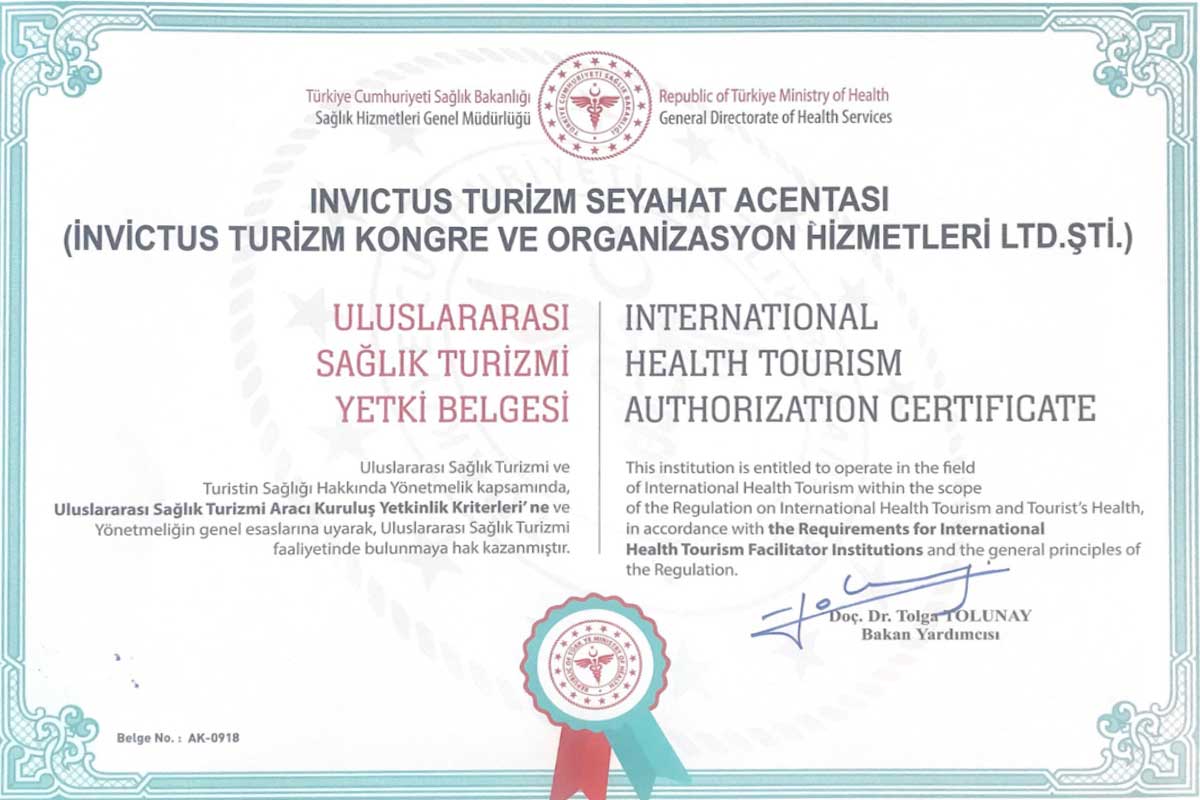
In order to ensure reliability in health tourism, the Turkish Ministry of Health requires intermediary service organisations such as us and health institutions to fulfil certain competence criteria. Organisations that can fulfil these criteria are entitled to receive the International Health Tourism Authorisation Certificate and prove that they are a reliable organisation in the sector.
